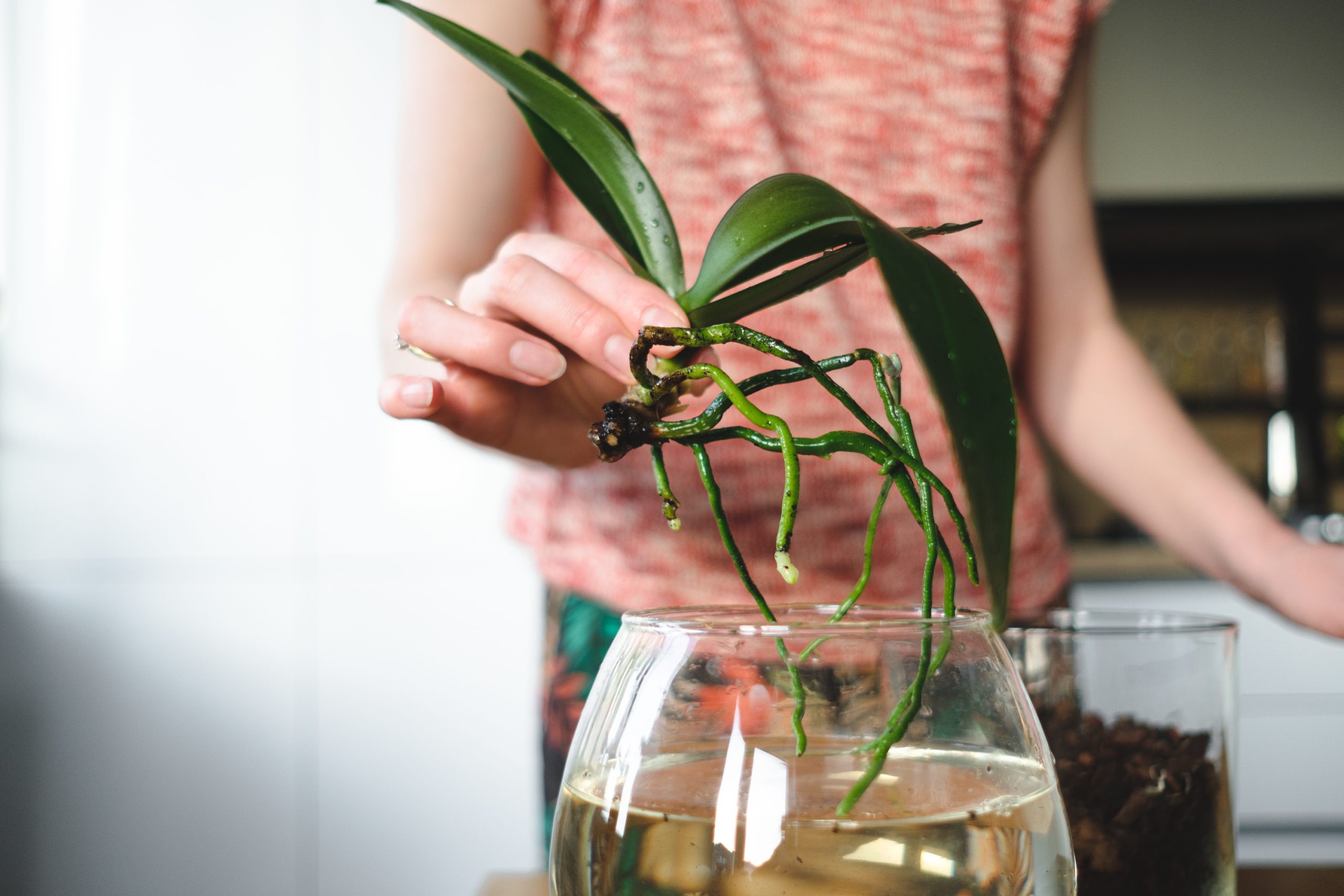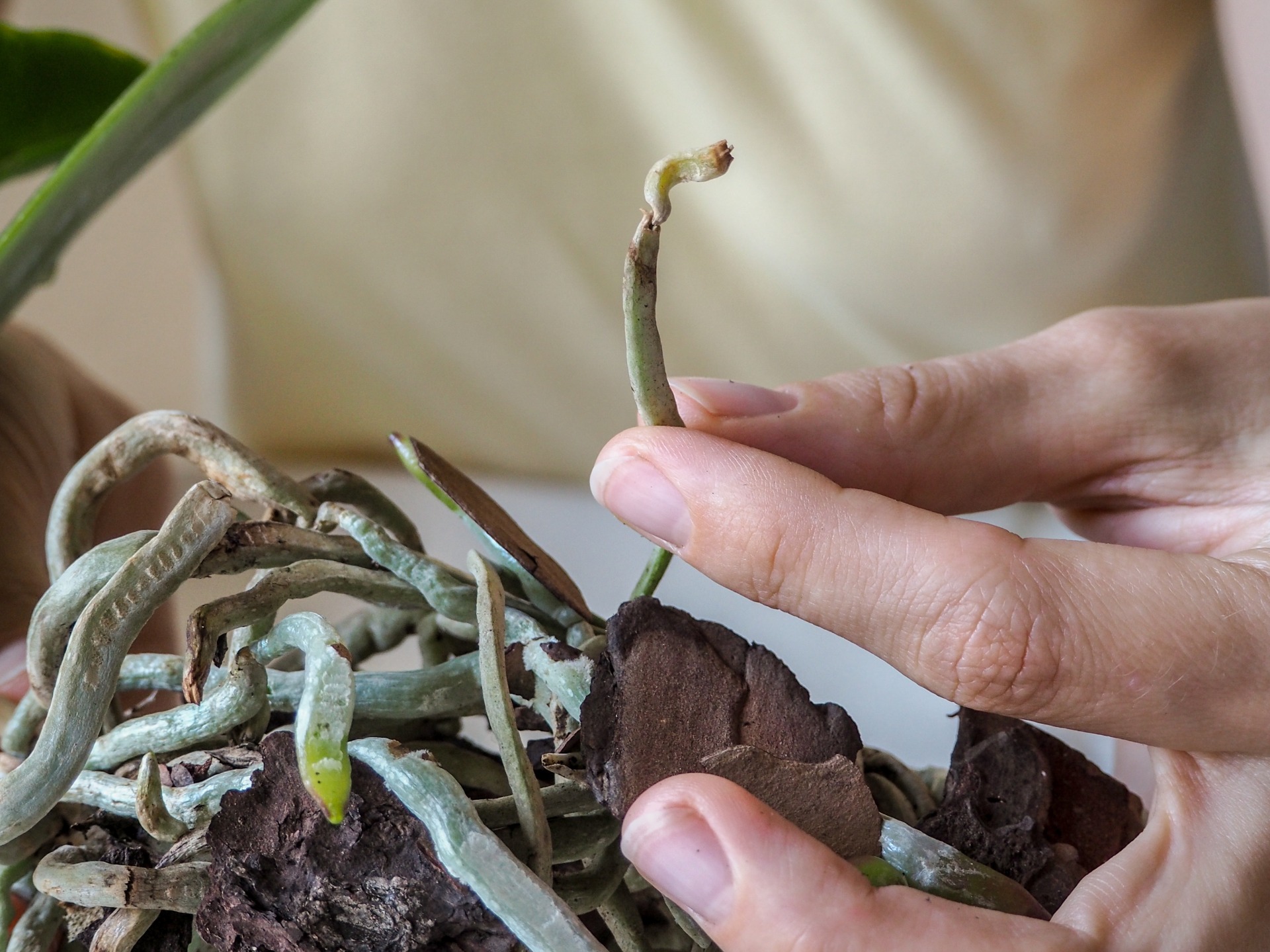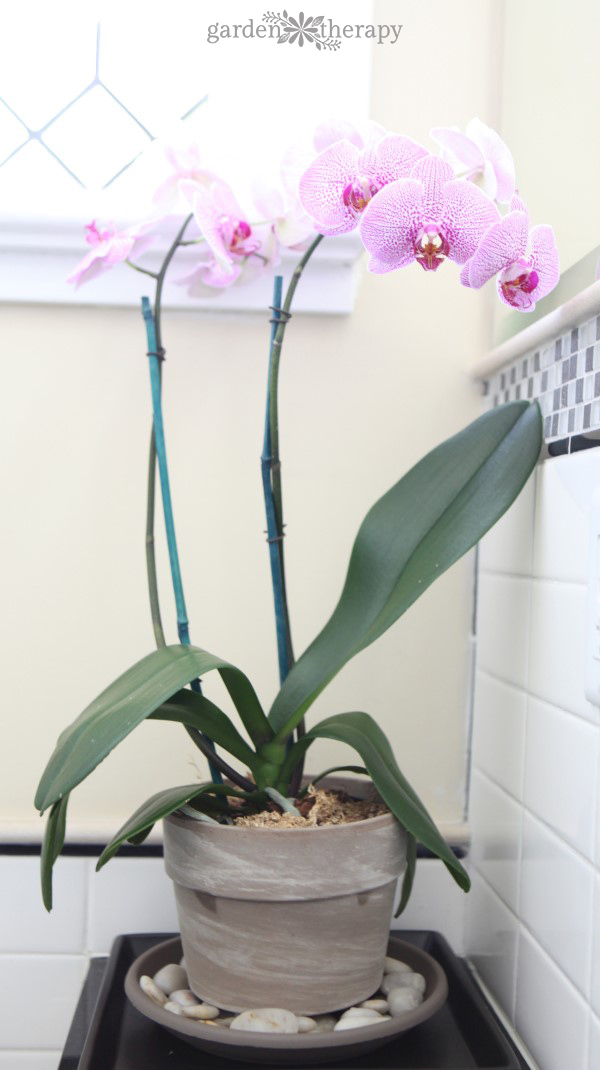Understanding the Natural Habitat of Orchids
Orchids are one of the most diverse and widespread plant families, with over 30,000 species found in almost every corner of the globe. From the tropical forests of Asia to the grasslands of Africa and the mountainous regions of South America, orchids have adapted to thrive in a wide range of environments. But where does an orchid plant grow best? The answer lies in understanding the natural habitat of these fascinating plants.
In their natural habitat, orchids can be found growing on trees, rocks, and even on the ground. They have evolved to occupy a variety of ecological niches, from the bright, sun-drenched forests of the tropics to the cool, shaded mountains of the temperate zones. This adaptability has led to the development of different species with unique growth habits, such as the epiphytic orchids that grow on trees and the terrestrial orchids that grow on the ground.
One of the key factors that determines where an orchid plant grows is the availability of light. Most orchids require bright, indirect light to photosynthesize and grow, although some species can tolerate full sun or deep shade. Temperature is another critical factor, with different species requiring different temperature ranges to thrive. For example, some orchids are adapted to the warm, humid temperatures of the tropics, while others require the cooler, drier temperatures of the temperate zones.
Humidity is also an important factor in determining where an orchid plant grows. Many orchids require high humidity to thrive, although some species can tolerate dry conditions. Air circulation is also essential, as it helps to prevent fungal diseases and promotes healthy growth.
By understanding the natural habitat of orchids, growers can better appreciate the conditions required to grow these plants successfully. Whether you’re growing orchids in a greenhouse, indoor pot, or outdoor garden, replicating the natural conditions found in their native habitat is key to promoting healthy growth and blooming.
How to Replicate the Ideal Growing Conditions for Your Orchid
Now that we’ve explored the diverse range of environments where orchids can be found in the wild, it’s time to discuss how to replicate these conditions in your own home or garden. By mimicking the natural conditions found in the orchid’s native habitat, you can create an ideal environment for your orchid plant to thrive.
Temperature is one of the most critical factors to consider when growing orchids. Different species require different temperature ranges to thrive, so it’s essential to research the specific needs of your orchid plant. For example, some orchids such as Phalaenopsis and Dendrobium require warm temperatures between 65-75°F (18-24°C), while others such as Cattleya and Oncidium prefer cooler temperatures between 55-65°F (13-18°C).
Humidity is another crucial factor to consider when growing orchids. Many orchids require high humidity to thrive, typically between 40-70%. You can increase the humidity around your orchid plant by placing it on a tray filled with water and pebbles or using a humidifier.
Light is also essential for orchid growth, and different species require different light levels. Some orchids such as Phalaenopsis and Dendrobium require bright, indirect light, while others such as Cattleya and Oncidium prefer filtered or dappled light. Placing your orchid plant near an east- or west-facing window is ideal, as this will provide the right amount of light without causing the leaves to become scorched.
Air circulation is also vital for healthy orchid growth. Good air circulation helps to prevent fungal diseases and promotes healthy growth. You can improve air circulation around your orchid plant by placing it at least 6-8 inches away from any walls or surfaces.
By replicating the ideal growing conditions for your orchid plant, you can create an environment that is conducive to healthy growth and blooming. Remember to research the specific needs of your orchid species and adjust your care techniques accordingly. With the right conditions, your orchid plant will thrive and provide you with beautiful blooms for years to come.
The Role of Soil and Nutrients in Orchid Plant Growth
When it comes to growing orchids, the right soil and nutrients can make all the difference. Orchids have specific needs when it comes to soil, and using a well-draining potting mix specifically designed for orchids is crucial for healthy growth. But what makes a good orchid potting mix, and how can you ensure your orchid plant is getting the nutrients it needs to thrive?
A good orchid potting mix should be well-draining, meaning it allows excess water to drain quickly and prevents waterlogged soil. This is especially important for orchids, as they are prone to root rot if the soil is too wet. A mix that contains a combination of bark, sphagnum moss, and perlite is ideal, as it provides good drainage and aeration for the roots.
In addition to a well-draining potting mix, orchids also require a balanced fertilizer to provide the necessary nutrients for growth. A balanced fertilizer that contains equal amounts of nitrogen, phosphorus, and potassium (NPK) is ideal, as it promotes healthy growth and blooming. However, it’s essential to avoid over-fertilizing, as this can damage the roots and lead to poor growth.
So, how often should you fertilize your orchid plant? The frequency of fertilization will depend on the type of orchid and its growth habits. As a general rule, fertilize your orchid plant once a month during the growing season (spring and summer), and once every two months during the dormant season (fall and winter).
It’s also essential to consider the type of fertilizer you use. A water-soluble fertilizer is ideal, as it allows you to control the amount of fertilizer your orchid plant receives. Avoid using fertilizers that contain urea, as they can burn the roots and lead to poor growth.
By using a well-draining potting mix and a balanced fertilizer, you can provide your orchid plant with the nutrients it needs to thrive. Remember to fertilize sparingly, as over-fertilization can be detrimental to your orchid’s health. With the right soil and nutrients, your orchid plant will be well on its way to healthy growth and blooming.
Watering Your Orchid: A Delicate Balance
Watering is one of the most critical aspects of orchid care, and it can be a delicate balance to achieve. Over-watering is one of the most common mistakes that can lead to root rot and kill your orchid plant. On the other hand, under-watering can cause the plant to become stressed and drop its buds. So, how do you know when to water your orchid plant?
The key to watering your orchid plant is to monitor the moisture levels in the soil. You can do this by sticking your finger into the soil up to the first knuckle. If the soil feels dry, it’s time to water. If it’s already moist, wait a few more days before watering again.
Another way to check the moisture levels is to lift the pot and feel its weight. A dry pot will be much lighter than one that’s full of water. You can also check the color of the potting mix. A well-watered potting mix will be a darker color than a dry one.
When watering your orchid plant, make sure to use lukewarm water. Cold water can shock the roots, while hot water can cause the plant to become stressed. Watering in the morning is also best, as this allows the plant to dry out slightly before nightfall.
It’s also essential to avoid getting water on the plant’s crown or leaves, as this can cause rot and other problems. Instead, water at the soil level, making sure to moisten the potting mix thoroughly.
By monitoring the moisture levels in the soil and watering your orchid plant carefully, you can create a delicate balance that will promote healthy growth and blooming. Remember, it’s always better to err on the side of caution and underwater slightly than to overwater and risk killing your plant.
Pruning and Potting: Essential Care Techniques for Orchid Plants
Pruning and potting are two essential care techniques that can help promote healthy growth and encourage blooming in orchid plants. Pruning involves removing dead or damaged leaves and stems, while potting involves transferring the plant to a new container with fresh potting mix.
Pruning is an important part of orchid care, as it helps to remove dead or damaged tissue that can harbor disease and pests. It also helps to promote healthy growth by encouraging the plant to produce new leaves and stems. When pruning your orchid plant, make sure to use clean and sterile tools to prevent the spread of disease.
Potting is also an essential part of orchid care, as it helps to provide the plant with fresh potting mix and a clean container. Orchid plants typically need to be repotted every 1-3 years, as the potting mix breaks down over time. When potting your orchid plant, make sure to choose a container that is slightly larger than the previous one, and use a well-draining potting mix specifically designed for orchids.
When choosing a potting mix for your orchid plant, make sure to select one that is well-draining and contains the right balance of nutrients. A good potting mix should contain a combination of bark, sphagnum moss, and perlite, which helps to retain moisture and provide good drainage.
In addition to pruning and potting, it’s also important to provide your orchid plant with the right amount of support. Some orchid plants, such as Phalaenopsis and Dendrobium, require staking to prevent the stems from toppling over. Others, such as Cattleya and Oncidium, require a trellis or other support to help the plant grow upright.
By providing your orchid plant with regular pruning and potting, you can help promote healthy growth and encourage blooming. Remember to choose the right potting mix and container, and provide the right amount of support to help your plant thrive.
Common Challenges and Solutions for Growing Orchids Indoors
Growing orchids indoors can be a rewarding experience, but it can also come with its own set of challenges. From pests and diseases to lack of light and humidity, there are many potential problems that can arise when growing orchids indoors. However, with the right knowledge and techniques, you can overcome these challenges and keep your orchid plant thriving.
One of the most common problems that can arise when growing orchids indoors is pests. Mealybugs, spider mites, and scale are all common pests that can infest orchid plants. To prevent pest infestations, make sure to inspect your plant regularly and isolate it from other plants. If you do find pests on your plant, treat it with insecticidal soap or neem oil.
Diseases are another common problem that can affect orchid plants. Root rot, leaf spot, and crown rot are all common diseases that can be caused by overwatering, poor air circulation, and high humidity. To prevent diseases, make sure to water your plant carefully and provide good air circulation. If you do notice any signs of disease, treat your plant with a fungicide and adjust your care techniques accordingly.
Lack of light is another common problem that can affect orchid plants. Many orchid species require bright, indirect light to photosynthesize and grow. If your plant is not getting enough light, it may become leggy or weak. To provide your plant with enough light, place it near a sunny window or use grow lights.
Humidity is also an important factor to consider when growing orchids indoors. Many orchid species require high humidity to thrive, but indoor environments can be dry and lacking in humidity. To increase the humidity around your plant, you can place it on a tray filled with water and pebbles or use a humidifier.
By being aware of these common challenges and taking steps to prevent them, you can keep your orchid plant healthy and thriving. Remember to monitor your plant regularly and adjust your care techniques accordingly. With the right care and attention, your orchid plant can flourish and provide you with beautiful blooms for years to come.
Choosing the Right Orchid Species for Your Growing Conditions
With over 30,000 species of orchids to choose from, selecting the right one for your growing conditions can be a daunting task. However, by understanding the specific needs of different orchid species, you can choose the one that is best suited to your environment and care techniques.
One of the most important factors to consider when choosing an orchid species is temperature. Some orchids, such as Phalaenopsis and Dendrobium, prefer warmer temperatures between 65-75°F (18-24°C), while others, such as Cattleya and Oncidium, prefer cooler temperatures between 55-65°F (13-18°C).
Humidity is another important factor to consider. Many orchids require high humidity to thrive, typically between 40-70%. If your growing environment is dry, you may want to consider using a humidifier or placing the orchid on a tray filled with water and pebbles.
Light is also an important factor to consider. Some orchids, such as Phalaenopsis and Dendrobium, prefer bright, indirect light, while others, such as Cattleya and Oncidium, prefer filtered or dappled light.
Some popular orchid species for beginners include Phalaenopsis, Dendrobium, and Oncidium. These species are relatively easy to care for and can thrive in a variety of growing conditions.
Phalaenopsis, also known as moth orchids, are one of the most common and easy-to-grow orchid species. They prefer bright, indirect light and warm temperatures between 65-75°F (18-24°C).
Dendrobium orchids are another popular species for beginners. They prefer bright, indirect light and warm temperatures between 65-75°F (18-24°C).
Oncidium orchids are known for their bright, showy flowers and are relatively easy to care for. They prefer bright, indirect light and warm temperatures between 65-75°F (18-24°C).
By choosing the right orchid species for your growing conditions, you can create a thriving environment for your plant to grow and bloom. Remember to research the specific needs of your orchid species and adjust your care techniques accordingly.
Conclusion: Creating a Thriving Environment for Your Orchid Plant
Creating a thriving environment for your orchid plant requires careful consideration of several factors, including temperature, humidity, light, and air circulation. By understanding the specific needs of your orchid species and replicating the natural conditions found in its native habitat, you can create a suitable environment for your plant to grow and bloom.
Remember to choose a well-draining potting mix specifically designed for orchids, and fertilize your plant regularly with a balanced fertilizer. Proper watering techniques are also essential, as over-watering and under-watering can both be detrimental to your plant’s health.
Pruning and potting are also important care techniques to master, as they can help promote healthy growth and encourage blooming. By pruning your orchid plant regularly, you can encourage new growth and prevent the plant from becoming leggy.
Repotting your orchid plant periodically is also essential, as it allows you to refresh the potting mix and provide your plant with a clean and healthy environment. By choosing the right potting mix and container, you can create a thriving environment for your orchid plant to grow and bloom.
Finally, remember to experiment and find the right balance of care techniques for your specific orchid species. By doing so, you can create a thriving environment that will allow your plant to grow and bloom to its full potential.
By following these tips and guidelines, you can create a thriving environment for your orchid plant and enjoy the beauty and elegance of these stunning flowers. Whether you’re a seasoned orchid enthusiast or just starting out, with the right care and attention, you can grow and enjoy these incredible plants.





:max_bytes(150000):strip_icc()/basic-indoor-orchid-care-1902822-23-d18c15e5bc294db3a6cd0b2835d4a416.jpg)
:max_bytes(150000):strip_icc()/basic-indoor-orchid-care-1902822-23-d18c15e5bc294db3a6cd0b2835d4a416.jpg)
